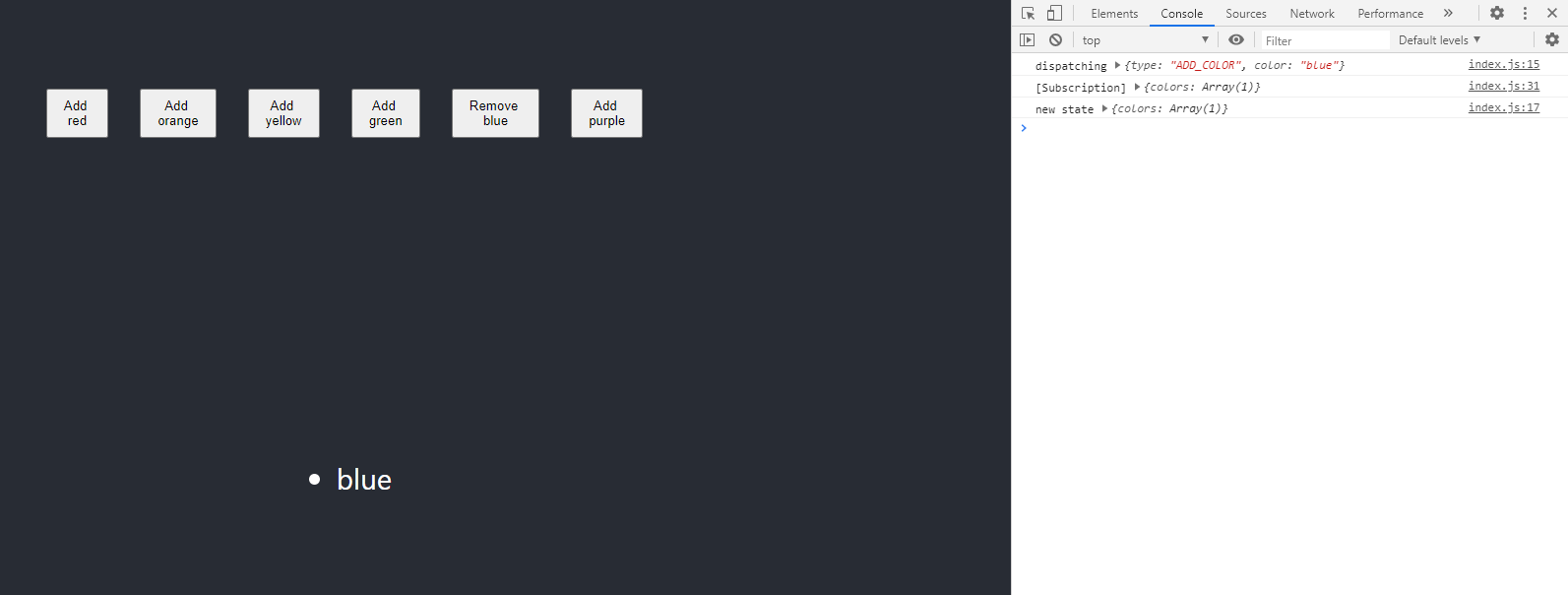Middleware in Redux
June 27, 2020
Middleware is a "middle-man" between your store running actions and reducers changing the state. You can have more than 1 middleware in your project.
It can be used when to log whenever an action has occurred or even give crash reports. Middleware is declared in your ./src/index.js file.
applyMiddleware needs to be imported from redux.
import { createStore, applyMiddleware } from 'redux';
This next snippet is from the
Redux docs
Opens in a new window 
const logger = store => {
return next => {
return action => {
console.log('dispatching', action);
const result = next(action);
console.log('new state', store.getState());
return result;
}
}
}
There are a few things going on here:
storeis the created store being used- logs to the console what action is being dispatched
next(action)is the same asstore.dispatch(action), which is dispatching the givenactionstore.getState()returns the current state of the store and logs it to the console
applyMiddleware() passes logger as an argument and is the second argument in the createStore() method.
In my Redux post , the Redux Devtools was declared as the second argument, this will be changed soon.
const store = createStore(
reducer,
applyMiddleware(logger)
);
The image below shows the 2 console messages.
 Console example from logger middleware
Console example from logger middlewareThere are some pre-made middlewares you can use such as
redux-thunk
Opens in a new window 
Install:
npm install redux-thunk
Import thunk from redux-thunk in ./src/index.js:
import thunk from 'redux-thunk';
Then add it to the applyMiddleware() method.
const store = createStore(
reducer,
applyMiddleware(logger, thunk)
);
In colors.js where the actions are declared, I renamed removeColor to removeColorAction and kept the same logic. Instead of a component removing a color immediately, a new created removeColorDelay will be used to dispatch this action. Because of redux-thunk, I can create a setTimeout to make an asynchronous dispatch.
./src/store/actions/colors.js
const removeColorAction = (color) => {
return {
type: actionTypes.REMOVE_COLOR,
color: color
}
}
export const removeColorDelay = (color) => {
// dispatch is from redux-thunk
return dispatch => {
setTimeout(() => {
dispatch(removeColorAction(color));
}, 3000)
}
}
With a component calling removeColorDelay, there will be a 3 sec delay before the color is removed from the state.
If using the
Redux Devtools
Opens in a new window 
Import compose from redux.
import { createStore, applyMiddleware, compose } from 'redux';
Declare a composeEnhancers constant which wraps the applyMiddleware() function.
const composeEnhancers = window.__REDUX_DEVTOOLS_EXTENSION_COMPOSE__ || compose;
const store = createStore(
reducer,
composeEnhancers(applyMiddleware(logger, thunk))
);
This example can be found in the
redux-intro repo
Opens in a new window 
Resources:
